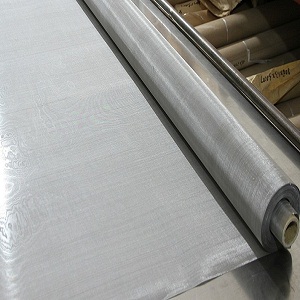
Which is better? Tungsten mesh or foil for distribution of positrons
The effectiveness of tungsten mesh and fine foils for moderation of rapid positrons releasing from sodium (Na-22) are tested in transmission geometry. For the tested thickness, the mesh is found to be superior to foils by 10 times with the highest efficiency comparable to that received with thin single crystal foils.
Preface
Moderators are usually a critical part for the development of quasi-monoernergetic positron beams, decreasing the energy of beta +particles that is released from radioactive decay down to a couple of electron volts. However the maximum moderation efficiency is described by rare gas solids, the needs for their application are not unimportant, the cryogenic conditions are specifically troubling in an electrostatic beam. The widely used alternatives are tungsten meshes or foils. However historically around double orders of magnitude less efficient than RGS, tungsten moderators are easier to handle and remain stable for a long period of time. Although much higher efficiencies have latest received from piles of meshes that were electropolished. Their efficiency was found to be based on the annealing pre-treatments, the time of etching and count of folding layers. Following these factors and in the action of development of latest electrostatic beamline at UCL, the difference of efficiencies of tungsten mesh and foils considering the material thickness and annealing pre-processing is evaluated.
The widely used alternatives are tungsten meshes or foils. However historically around double orders of magnitude less efficient than RGS, tungsten moderators are easier to handle and remain stable for a long period of time. Although much higher efficiencies have latest received from piles of meshes that were electropolished. Their efficiency was found to be based on the annealing pre-treatments, the time of etching and count of folding layers. Following these factors and in the action of development of latest electrostatic beamline at UCL, the difference of efficiencies of tungsten mesh and foils considering the material thickness and annealing pre-processing is evaluated.
Test
The tests were conducted by using an electrostatic beam of Na-22 impinged on the moderator under test. The released slow positrons are then speeded up to 2KeV acceleration and directed to a spot size of radium 1mm on remoderator where brightness improvement is conducted in a transmission shape by using 500 angstrom thick tungsten foil. The reworked positrons (N+) are then accelerated to the desired energy, sent through zoom lenses and bounced by 90 degree by a cylindrical mirror analyzer to isolate them from quick particles and gamma rays emanating from the source area. A position sensitive detector monitors the positrons at the end of the flight path.
Secondary electrons emitted at the remoderator are found by using a channel electron multiplier, activating the beginning of a time series that is terminated by the positron entrance at the detector. To compare the effectiveness of test moderator with theoretical predictions, a complete account as feasible should be made of the different factors that may influence the measured moderation efficiency. In moderators, the meshes are often stacked together to improve interception of the beta particles released by radioactive source. The mesh and foil moderators were annealed.
Outcomes and conclusion
The efficiency for single and multi crystal foils and etched and unetched meshes are evaluated. The foils of 1 micron- m and 1.8 micron-m were single crystals of orientation whilst foils of 12 micron-m and 25 micorn-m were polycrystalline. The extent of test outcomes is normally lower by a factor of 5 -10, annealed moderators were open to air. The moderator annealed in situ and further no reduction was observed in efficiency when the film is kept in contact of air for a couple of hours.
For a specific moderator thickness, the tungsten mesh offered higher yield than foils by 10 times with the highest efficiencies of around 10(-3) as compare to the value received for single crystal foils. No evidence was noticed for wire diameters. The efficiency of tungsten meshes and thin foils for moderation of rapid positrons from Na-22 are tested in transmission geometry and suitable agreement has ensional model normally over estimated test to an order of magnitude, closer correspondence is discovered between theory and measurements for foils and meshes across the variety of tests by extending the diffusion model to three dimensions.